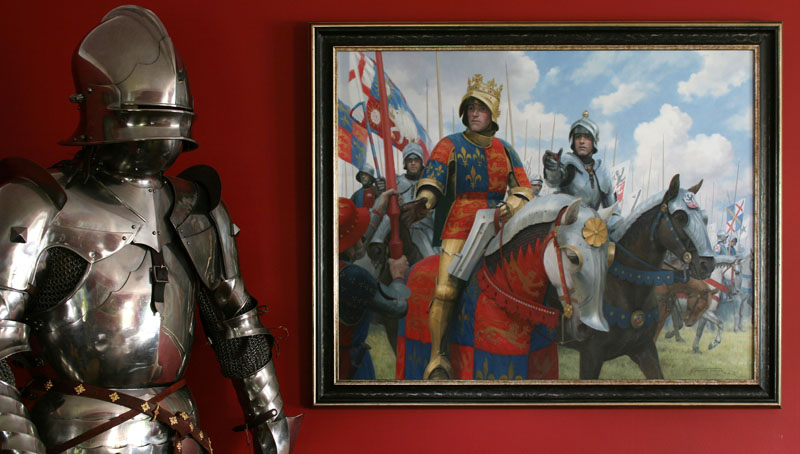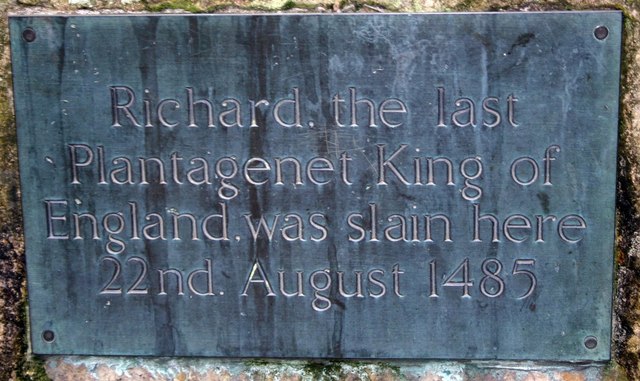Painting and Researching the ANZACs
Since setting about painting the NZ ANZAC troop miniatures for the WW100 Diorama I realised that I really knew very little about WW1 Uniforms and weapons in general. (Compared to my knowledge of WW2 weapons)
So now it is Sunday evening, and I am waiting for the washes on the shirts and trousers to dry.
So now it is Sunday evening, and I am waiting for the washes on the shirts and trousers to dry.
The Weapons:
Captured Turkish Mausers being inspected
Australian ANZAC troops displaying period equipment, similar to those of NZ troops
Still from the movie Gallipoli: Lee Enfields, bayonets fixed
I knew the the ANZACs had SMLE's - Lee Enfields. The Ottoman Turks had German Mausers. So .303 and 7.92mm rifles.
Off we go on the research. Isn't the internet just wonderful...leads you into dark corners of musty photographs and unseen treasures. This hunt also took me to a fascinating account from the Turkish perspective: Turkey's War (Gallipoli)
I have no idea about copyright on the photos I found, some are from the Central News Agency in the UK (Via Kings College London), The Australian War Museum, Imperial War Museum, Te Papa, lotsa places. So if I need to credit anyone, or remove a photo, just let me know, I hold no copyright.
Just collected the images for reference and out of hobby and academic interest want to share it with fellow gamers and history buffs.
So I share my meanderings of the afternoon, which may be useful for someone needing reference on troops at Gallipoli. Interestingly, whenever I view material on WW2 there is always tons of familiar photos. Not so with WW1 for me. Just plain fascinating historical records:
Rifle Models
Given the relentlessly high demand for any and all forms of offensive weaponry during the war - particularly during its earliest days when armament production was only beginning to accelerate - many different types of rifle were pressed into service, including a fair number of ancient models.
However for the most part a core set of weapon models were relied upon by the key belligerent armies at Gallipoli.
German Mauser GW 98

The Gewehr 98 (abbreviated G98, Gew 98 or M98) was a German bolt action Mauser rifle firing cartridges from a 5 round internal clip-loaded magazine that was the German service rifle from 1898 to 1935. The Gewehr 98 action, using stripper clip loading with the powerful 7.92×57mm Mauser cartridge, introduced advanced infantry weapon features in 1905; which was rapidly adopted in the Anglo-American Pattern 1914 Enfield/M1917 Enfield and the Japanese Arisaka Type 38/Type 99.
The Gewehr 98 replaced the earlier Gewehr 1888 rifle as the German service rifle. It first saw combat in the Boxer Rebellion, and was the main German infantry rifle of World War I. The Gewehr 98 saw military use by the Ottoman Empire and also by Spanish Nationalists.
It suffered however from the disadvantage of being unsuited to rapid fire (on account of its bolt arrangement), and was limited by a five-cartridge magazine.

Mauser stripper clip
Nevertheless it was a thoroughly dependable, well tested and accurate weapon, and with its fitted optical sight, ideal for use in sniping.
British Lee-Enfield Mark III (SMLE)
The rifle that the regulars of the British Expeditionary Force carried into France in August 1914 was officially known as the “Rifle, Short, Magazine Lee-Enfield Mk III”.
This was abbreviated to SMLE and immediately bastardised into “The Smelly” by the soldiers.
Lee Enfield and helmet used to check for Turkish sniper presence at Gallipoli
Martini-Henri
In 1888 Britain bought 350 of James Lee’s patent rifles chambered for the .303 Rubin cartridge, which had a rimmed case and its bullet held centrally by a washer. After some further development, Britain’s first .303 service rifle, the Lee-Metford Mk 1, was adopted officially on 22 December 1888. This combined the Lee’s action (with its eight- round magazine) with William Ellis Metford’s seven-groove rifling and a modified version of Rubin’s cartridge. In 1895, the rifle was modified again with an enhanced 10-shot magazine, improved five-groove rifling developed at the Royal Small Arms factory at Enfield and a smokeless cartridge that used cordite as a propellant. This was the first in a long series of .303 Lee-Enfield rifles.
For more on Lee-Enfield history (clicky)
The Long Lee-Enfield, as it became known because of its 30in barrel, was the standard British rifle throughout the Second Boer War (1899–1902). It was supplemented by a carbine version with a 21in barrel carried by the cavalry. The Royal Irish Constabulary had its own special carbine; this version would accept a bayonet, presumably for crowd control.
Lee Metford upgraded to Lee Enfield Long (ca 1900)
The British were routinely outshot by the Boers with their state-of-the-art Mauser Model 1896 rifles. Although the Lee-Enfield had a 10-shot magazine it had to be loaded with individual cartridges, which took time. The Mauser’s magazine could be loaded with five cartridges in a single action by means of a charger clip. This gave a higher rate of fire. The Mauser’s 7mm cartridge was ballistically superior and enhanced the average Boer's already impressive marksmanship skills.
SMLE's piled up as Highlanders arrive on Gallipoli Beaches.
Note the canvas wraps to protect the firing mechanisms.
The new universal rifle had a 25in barrel, a 10-round magazine and a Japanese-inspired sword bayonet with a wicked, 17-inch blade. The barrel was encased in a wooden hand-guard.
The SMLE’s effective range in competent hands was about 400 yd. However, it was fitted with long-range sights calibrated from 1,600yd to 2,800yd. These were intended for mass volley fire when large bodies of men fired at large targets, such as an artillery battery at long range. The cleaning kit – a brass oil bottle and a pull-through – was carried in the butt.
Mark III with its long-range sight, unsuitable for trench warfare
1916 SMLE III*
The 1916 SMLE III * was the standard issue rifle to ANZAC Infantry
Some strange and unusual weapons also saw the light at Gallipoli:
The periscope gun, a SMLE modified to be shot from within the trench but out of harm's way:
Drip (or "pop off") rifle
These were self-firing rifles used at Gallipoli to deceive the Turks during the evacuation of December 1915.
Fire was maintained from the trenches after the withdrawal of the last men, by rifles arranged to fire automatically. This was done by a weight being released which pulled the trigger. Two kerosene tins were placed one above the other, the top one full of water and the bottom one with the trigger string attached to it, empty. At the last minute, small holes would be punched in the upper tin; water would trickle into the lower one, and the rifle would fire as soon as the lower tin had become sufficiently heavy.
Another device ran a string, holding back the trigger, through a candle, which slowly burnt down, severed the string, and released the trigger.
Delayed-action device invented by Lance Corporal Scurry of the 7th Battalion, AIF.
(AWM G01291)
Such devices provided sporadic firing which helped convince the Turks that the Anzac front line was occupied long after thousands of men had crept down to the beaches and escaped. British generals estimated that half the force would be lost in any attempt to withdraw because the Turks could not fail to notice as the trenches were so close. In the event, the Turks were so deceived that 80,000 men were evacuated with only about half a dozen casualties.
The drip rifle was invented by Lance Corporal W. C. Scurry of the 7th Battalion, AIF, with assistance from Private A. H. Lawrence. For the part he played in making the evacuation a success, Scurry was mentioned in dispatches, awarded the Distinguished Conduct Medal, and promoted to sergeant.
Heavy Machine Guns:
Ottoman Turks:
Machinengewehr 08 (Maxim variant) :
When war in Europe broke out in the summer of 1914 the major armies (bar France and Austria) largely made use of machine guns based upon Maxim's original MG design.
The Maxim Gun was water-cooled (via a jacket around the barrel which held approximately one gallon) and fed from fabric belts; the German version of the gun, the Maschinengewehr, utilised 250-round belts. The whole was mounted on a sledge which, although heavy - 1914 machine guns weighed from 40-60 kg - did enable the gun to be carried in the manner of a stretcher. The Maxim was usually operated by a four to six man team.
In designing his machine gun, Hiram Maxim utilised a simple if ingenious concept. The gas produced by the explosion of the powder in each cartridge itself generated a recoil which served to continuously operate the gun's mechanism. No external power was needed. His initial design allowed for a theoretical rate of fire of up to 600 rounds per minute (half that number in practice).
Maxim triumphantly demonstrated his new invention to, firstly, the British Army - he had moved to London shortly before developing the machine gun - in 1885. Two years later the British government placed an initial order for three of the devices for testing purposes. Although his invention passed all stipulated tests it was nevertheless not picked up the British; the military high command envisaged limited infantry use of the weapon.
Later the same year, 1887, Maxim's gun was demonstrated to the German Army. Kaiser Wilhelm II personally attended trials and, duly impressed, authorised its use. Thus the Maschinengewehr was born - a more or less direct copy of Maxim's invention; similarly the British Vickers and the Russian Pulemyot Maxima were also based upon Maxim's Gun. Effectively both sides used Maxim guns.
MG 08
The Maxim Gun in ANZAC Use:
Auckland Mounted Rifle Machine Gun Company
The Vickers Gun
The Vickers machine gun was based on the successful Maxim gun of the late 19th century. After purchasing the Maxim company outright in 1896, Vickers took the design of the Maxim gun and improved it, reducing its weight by lightening and simplifying the action and substituting components made with high strength alloys. A muzzle booster was also added.
English Vickers gun in action. These only reached most NZ Units after Gallipoli
The British Army formally adopted the Vickers gun as its standard machine gun on 26 November 1912, using it alongside their Maxims. There were still great shortages when the First World War began, and the British Expeditionary Force was still equipped with Maxims when sent to France in 1914. Vickers was, in fact, threatened with prosecution for war profiteering, due to the exorbitant price it was demanding for each gun. As a result, the price was slashed.
As the war progressed, and numbers increased, it became the British Army's primary machine gun, and served on all fronts during the conflict. When the Lewis Gun was adopted as a light machine gun and issued to infantry units, the Vickers guns were redefined as heavy machine guns, withdrawn from infantry units, and grouped in the hands of the new Machine Gun Corps (when heavier 0.5 in/12.7 mm calibre machine guns appeared, the tripod-mounted, rifle-calibre machine guns like the Vickers became medium machine guns).
After the First World War, the Machine Gun Corps (MGC) was disbanded and the Vickers returned to infantry units. Before the Second World War, there were plans to replace the Vickers gun; one of the contenders was the 7.92 mm (.312 in) Besa machine gun (a Czech design), which eventually became the British Army's standard tank-mounted machine gun. However, the Vickers remained in service with the British Army until 30 March 1968. Its last documented operational use was in the Radfan during the Aden Emergency, but I was told by my cousin that water-cooled Vickers Guns were still in use by the SA Defence force for suppressive fire at Ruacana Falls in Angola in the late 1970s and early 1980s
Turks with a Vickers gun captured from the British
Stokes Trench Mortar
Mills bomb hand grenades

Gallipoli, Turkey. 1915. ANZAC soldiers making hand grenades from empty jam tins.
(Imperial War Museum Q13281)
Jam-tin grenades or bombs (recreation
German Howitzer in Turkish use at Gallipoli
And who would have thought that they had Airships at Gallipoli ?
Well, maybe not at Chunuk Bair.













































